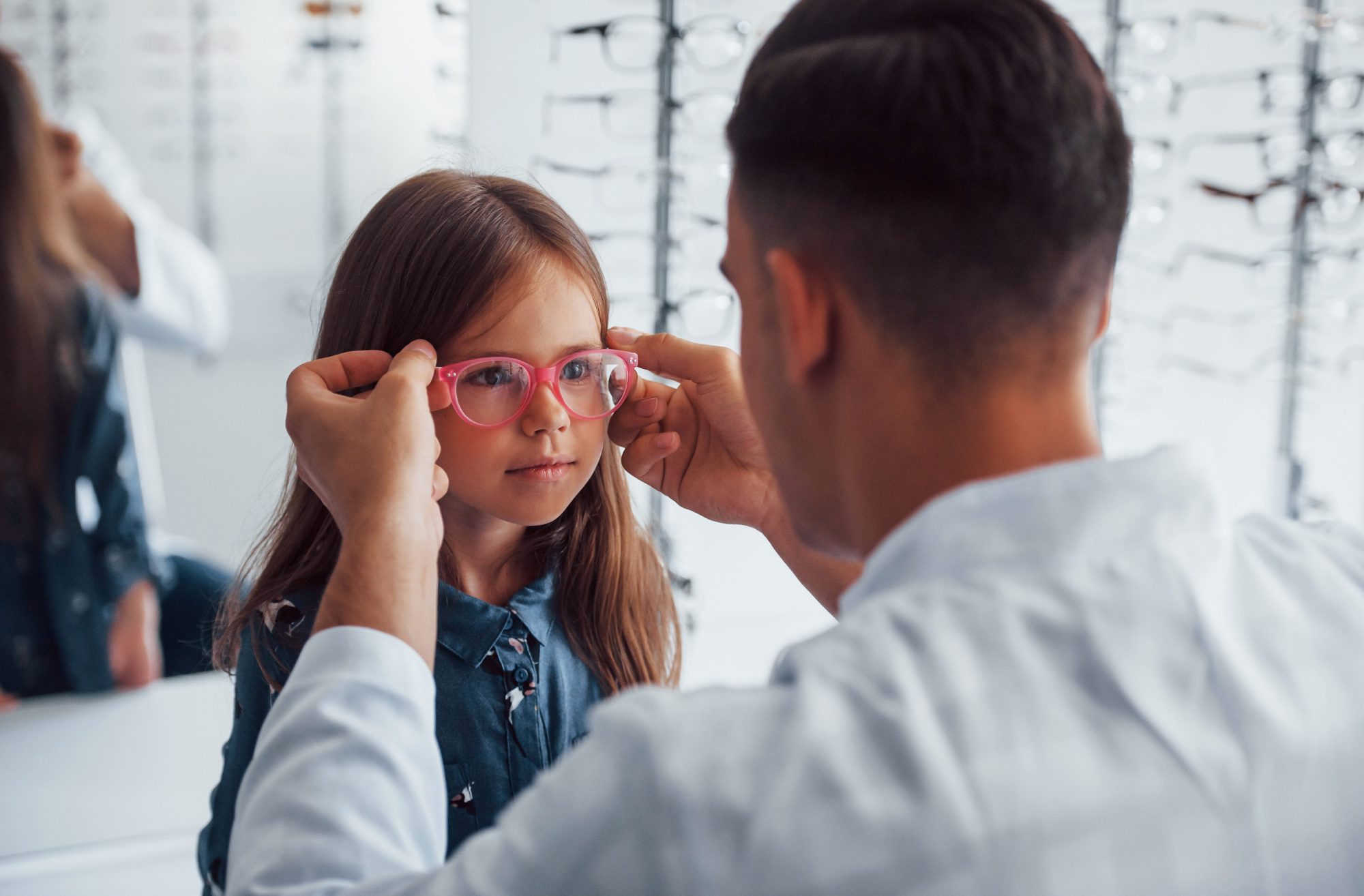
Aug 5
How Can You Help Your Child Adapt to Their New Glasses?
Starting your child’s journey with glasses can feel nerve-wracking for both of you. While 25.3% of children aged 2-17 wear glasses or contact lenses according to CDC data, knowing other kids have them doesn’t always make the transition easier for your little one. Many children worry about how they’ll look, whether friends will tease them, or if glasses will be uncomfortable.
At Trumansburg Optical, we’ve helped countless families navigate this important milestone. After years of working closely with children and their parents, we’ve learned that creating a positive experience from the very beginning is the key to success. Here’s how you can help your child adjust to their new glasses with patience, support, and a little creativity.
1. Understand and Acknowledge Your Child’s Concerns About Glasses
It’s normal for children to feel apprehensive about wearing glasses. They may worry about:
- Looking different: They might fear standing out or not fitting in with their friends.
- Being teased: Concerns about being made fun of at school are common.
- Discomfort: They may feel uneasy about having something new on their face.
Start by having an open, non-judgmental conversation. Ask questions like:
- Are you worried about how glasses will feel during sports or playtime?
- Do you think wearing glasses will change how you look?
Acknowledge and validate their feelings while gently introducing the positive aspects of glasses. Highlight the benefits, such as:
- Clearer vision: They’ll be able to see the board in class, enjoy reading, and watch movies without strain.
- Improved performance: Activities like sports or crafts can become more enjoyable with better vision.
- Confidence boost: Reassure them that seeing clearly can help them feel more capable and confident overall.
When children feel understood, they’re more likely to approach wearing glasses with an open mind.
2. Choose Glasses That Prioritize Comfort and Durability
When selecting glasses for your child, focus on finding frames that are built to last and feel great to wear. Here’s what to keep in mind:
- Get a proper fit: Look for frames that sit comfortably on your child’s nose and ears without slipping or pinching. Adjustable options can grow with your child and maintain comfort over time.
- Opt for durable materials: Kids are always on the move, so pick sturdy frames made from flexible or impact-resistant materials to handle daily wear and tear.
- Consider lens protection: Lightweight lenses with scratch-resistant coatings are a must, especially for active kids who might be rough on their glasses.
By prioritizing comfort and durability, you’ll set your child up with glasses that can keep up with their lifestyle and feel good all day long.
3. Turn Glasses into Something Your Child Loves
Help your child get excited about wearing glasses by adding a sense of fun and individuality to the experience. Here’s how:
- Let them choose: Give your child the freedom to pick their favorite styles, colors, or shapes. Glasses that reflect their personality will make them proud to wear them.
- Add fun accessories: Personalize their glasses with colorful cases, playful cleaning cloths, or straps featuring their favorite characters. These little touches can make wearing glasses feel special.
- Celebrate their new look: Use positive reinforcement to build confidence. Compliment them on how great they look in their glasses, and offer small rewards for good habits like wearing and taking care of them.
When glasses feel fun and unique to your child, they’ll be proud to wear them.
4. Let Your Child Adjust to Glasses Gradually
It takes time to get used to wearing glasses, so be patient and supportive during the adjustment period.
- Start small: Encourage them to wear glasses for short periods at home, such as while reading or watching TV. Gradually increase wear time as they grow more comfortable.
- Establish routines: Incorporate putting on glasses into their daily routine, like brushing their teeth each morning. Consistency helps normalize the habit.
- Teach proper care: Show your child how to clean their glasses gently, store them properly, and avoid scratching or breaking them. This builds a sense of responsibility and pride in taking care of their new accessory.
Remind them that it’s okay to take breaks if glasses feel uncomfortable at first. Support and encouragement will help them transition more smoothly.
5. Build Confidence for Wearing Glasses at School
School can be a challenging environment for a child adjusting to glasses. Here’s how to make the transition easier:
- Speak with teachers: Inform your child’s teacher that they’re starting to wear glasses. Teachers can provide gentle reminders to wear them and check that they feel comfortable in the classroom.
- Role-play responses: Prepare your child for potential questions or comments from peers. Practice positive responses like, “I think my glasses are cool!” or “They help me see better.”
- Encourage connections: If possible, connect with other families whose children wear glasses. Seeing other kids wearing glasses can help normalize the experience and reduce any feelings of isolation.
Reinforce that glasses are a tool to help them succeed, and remind them that many of their classmates may also use tools like braces, retainers, or inhalers to support their health.
You Can Do This Together
Getting glasses represents an important step in your child’s health. With patience, support, and the right approach, most children adapt quickly and even become excited about their clearer vision.
At Trumansburg Optical, we’re committed to making your child’s vision care experience as positive as possible. Our team understands the unique needs of young patients and works closely with families to secure successful outcomes. Contact us today to learn more about our comprehensive children’s eye care services and how we can support your family’s vision health journey.

